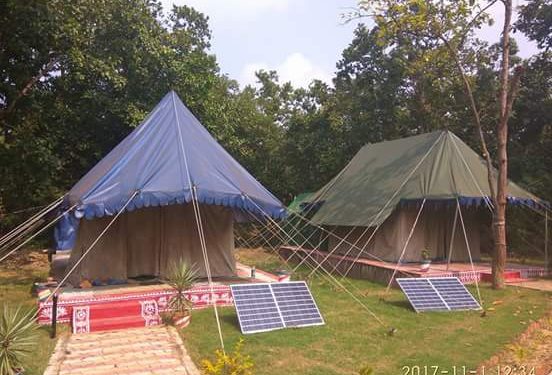Kendrapara: The National Human Rights Commission (NHRC) has been informed that due to lack of funds from NTCA (National Tiger Conservation Authority) and the existence of Left-wing extremism, inhabitants in the affected villages in the Satkosia Wild Life Division die and get injuries due to man-animal conflict.
In the first phase, the villages of Raigoda and Marada were proposed to be relocated. The Raigoda village of Satkosia Wildlife Division under Satkosia Tiger Reserve has been relocated from the core area to a new site outside the reserve in Saruali near the Nuakheta village in the Angul tehsil of Angul district.
Various facilities have been provided to the inhabitants of the village and development works are being executed.
The report says that in the relocation of Marada village in Mahanadi (WL) Division progress has been delayed due to Left extremism.
Since 2014, the NHRC has been monitoring the case filed by Supreme Court lawyer and rights activist Radhakanta Tripathy over the issue of human rights in the man-animal conflict zone.
The DFO, Mahanadi (WL) Division, has also been asked to speed up the process through talks with concerned persons.
After considering the report, the NHRC sought a rejoinder from Tripathy within six weeks.
The furious tigress ‘Sundari’ has been creating problems now, but my petition and subsequent prayers have been moving from state to Centre at a snail’s pace. The admission of the state authorities regarding the delay in ensuring basic facilities to villagers is abominable, Tripathy said.
Earlier, the government reported to the NHRC about the relocation of Raigoda village in Angul district, which forms part of the core area of the tiger reserve. The report said the plan for relocation is pending sanction of funds from the National Tiger Conservation Authority (NTCA).
Expressing anguish over the slow progress in the rehabilitation of the victims, the NHRC asked the NTCA to send a detailed report on the relocation or else it will take action.
While monitoring the case filed by rights activist Tripathy the NHRC passed the order recently.
Due to the failure of the Government of Orissa and its Ministry of Environment and Forests, the villagers staying inside the Satkosia Tiger Reserve and adjacent areas are suffering immensely.
The relocation of human habitations from the core areas of tiger reserves is being strongly insisted on by the National Tiger Conservation Authority (NTCA), but the state government is not paying attention to the problem, Tripathy alleged.
In Satkosia Tiger Reserve, the NTCA has not been able to relocate even a single village so far. The tiger conservation plan for Satkosia was chalked out in 2006-07 and there were five revenue villages – Raigoda, Marada, Kuturi, Salapagonda and Musuguda – inside the core area which measures 524 sq.km. The five villages occupied 416.74 hectares, and Raigoda was the biggest with an area of 172 hectares.
Ironically, the residents of Raigoda have petitioned to be shifted out of the core area, but the wildlife wing and the tiger reserve management have done little to move them out.
The crops of the villagers are damaged frequently by elephants and wild boars and the villagers are losing their livelihood.
Another bottleneck delaying relocation is the non-constitution of the Tiger Conservation Foundation for Satkosia which is mandatory for direct fund transfer from NTCA to the Tiger Reserve management.
The funds are woefully short, and that’s why the Ministry of Environment and Forests had advised states to use funds from the Compensatory Afforestation Management and Planning Authority for rehabilitation of people from protected areas, Tripathy pointed out.
He requested the NHRC to act to rehabilitate the villagers as per norms and ensure adequate safety for their life and livelihood, and to pay them compensation.
Earlier, the Commission asked the Director of NTCA to speed up the relocation and submit a report, but it failed to respond.
PNN






































